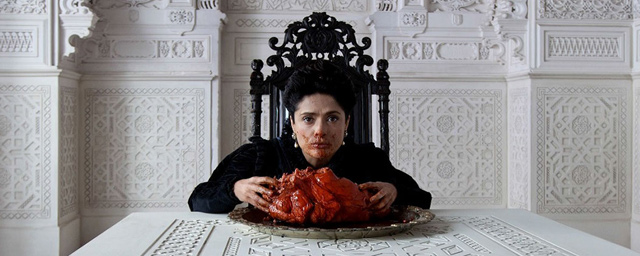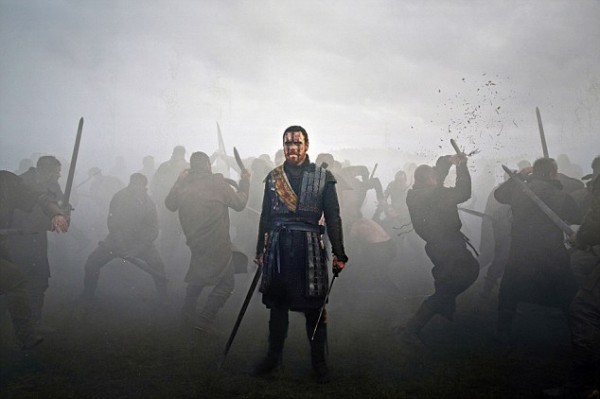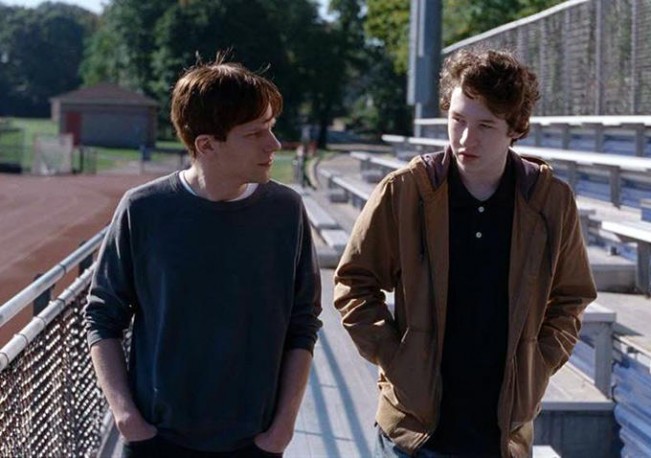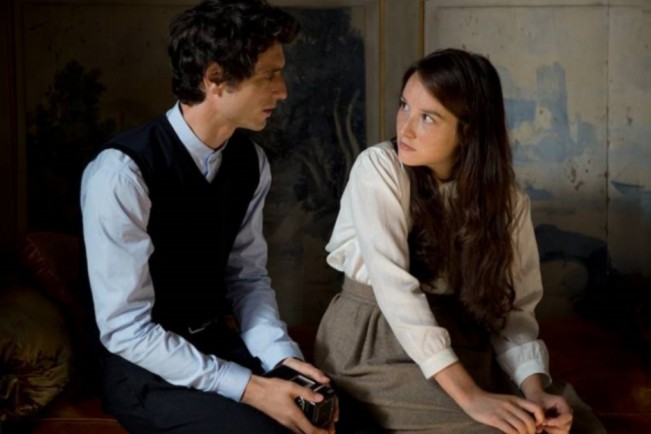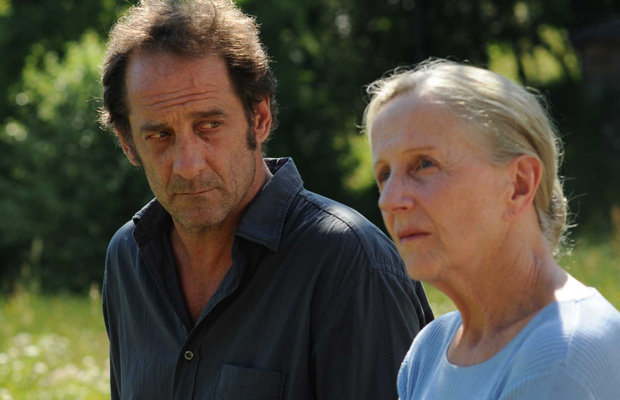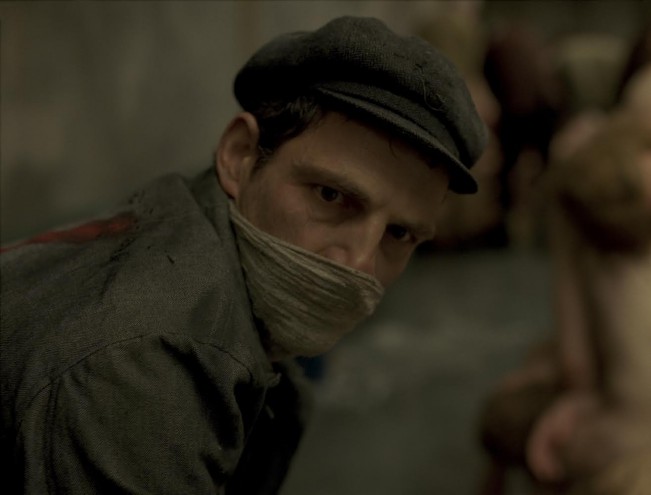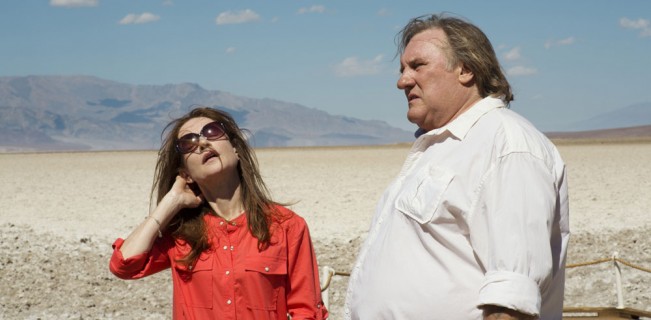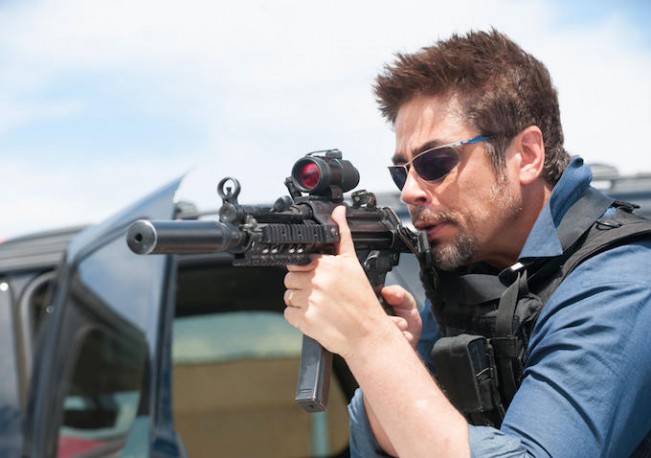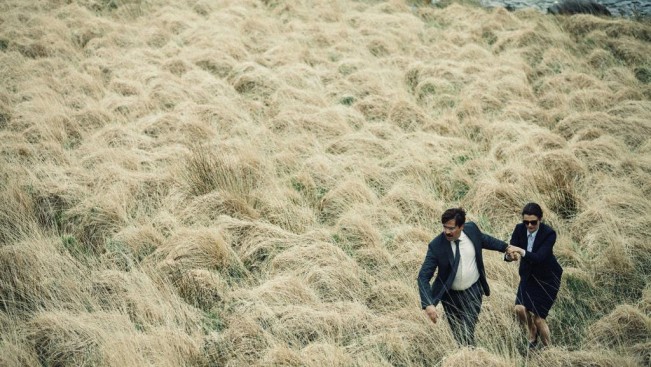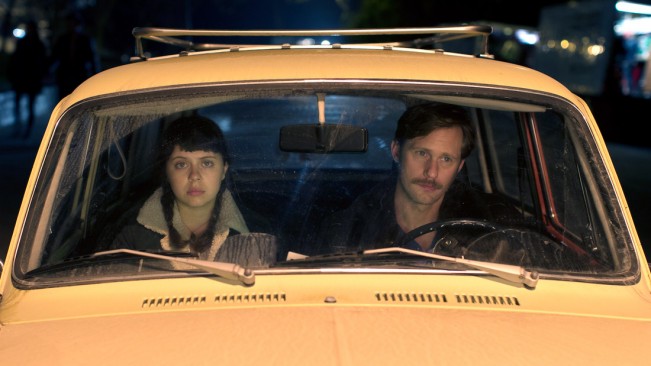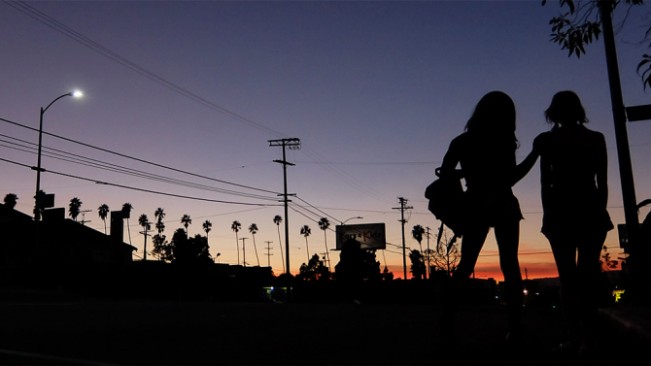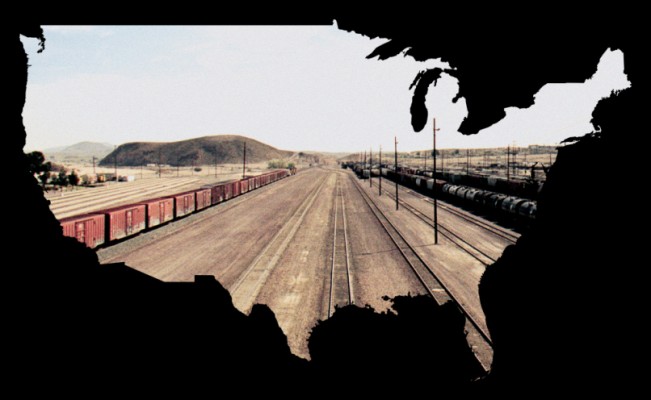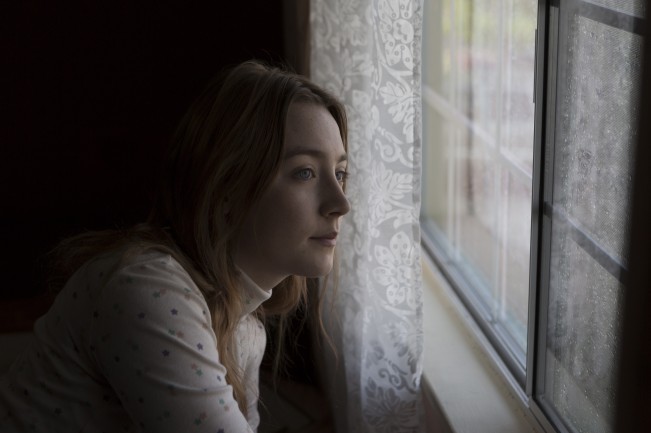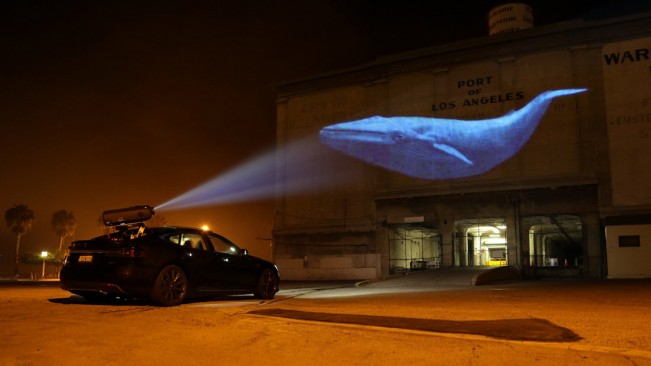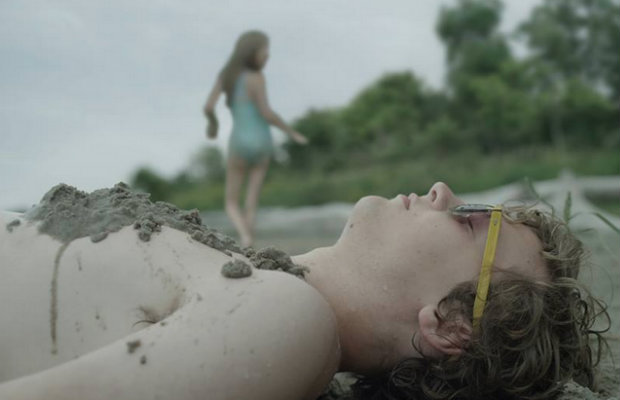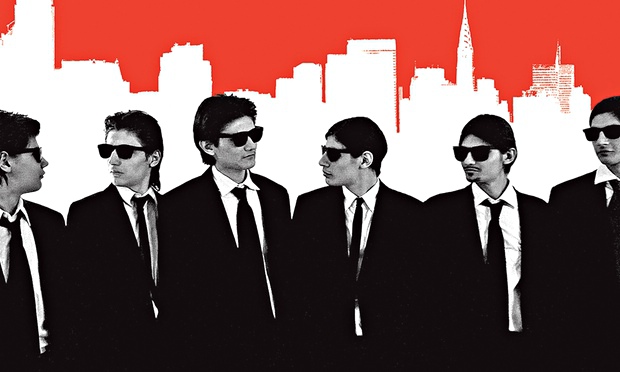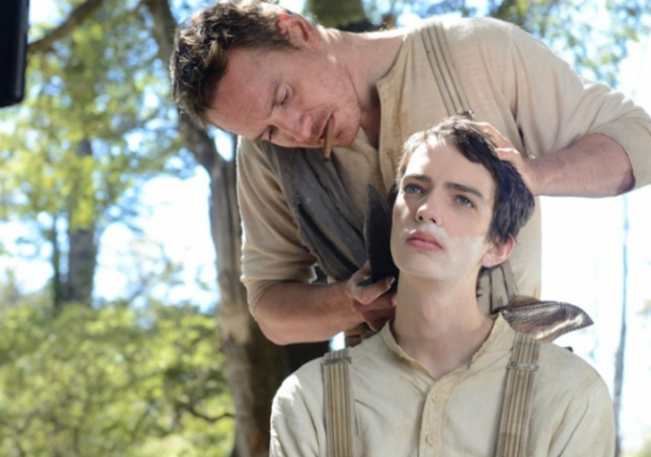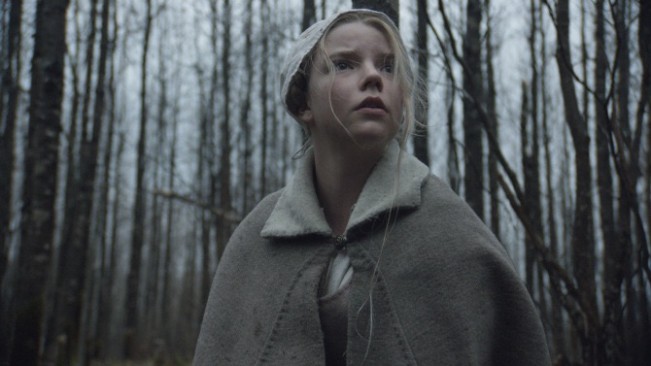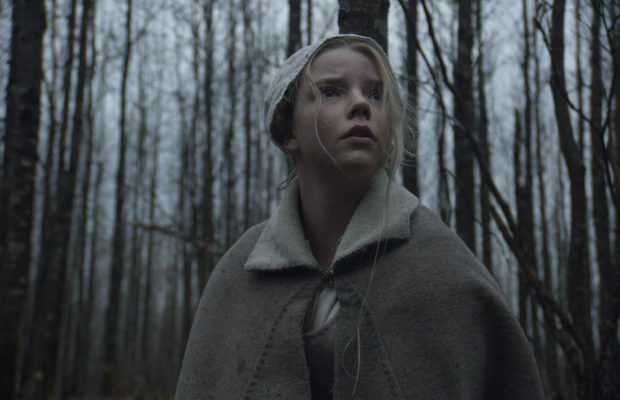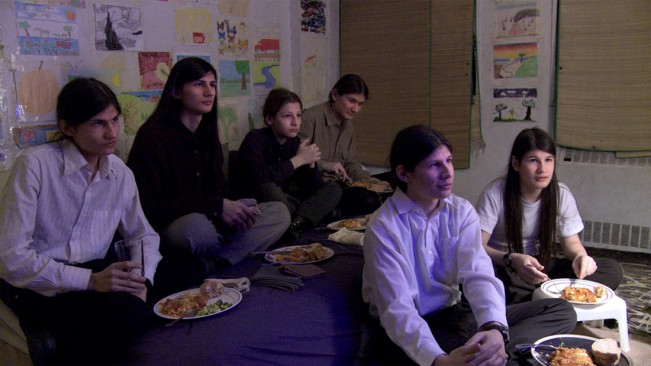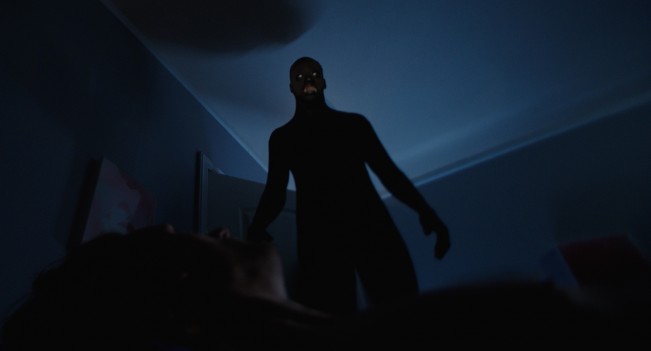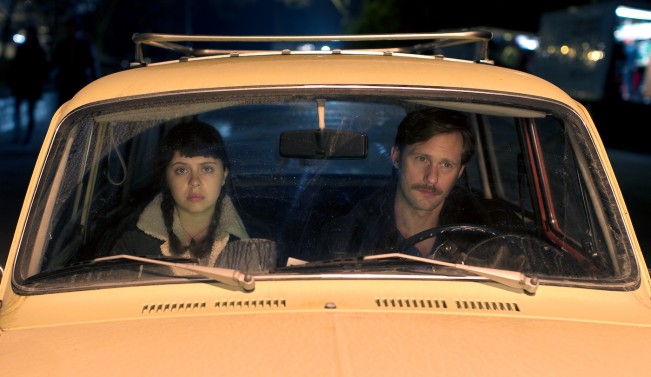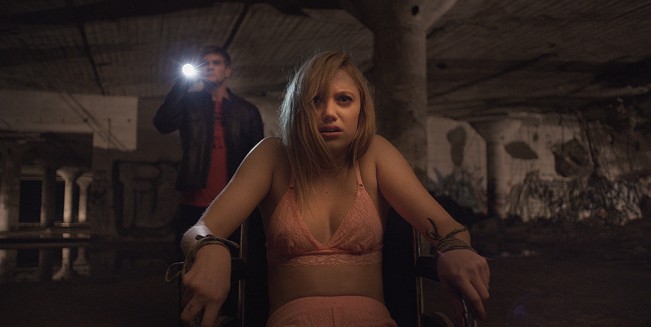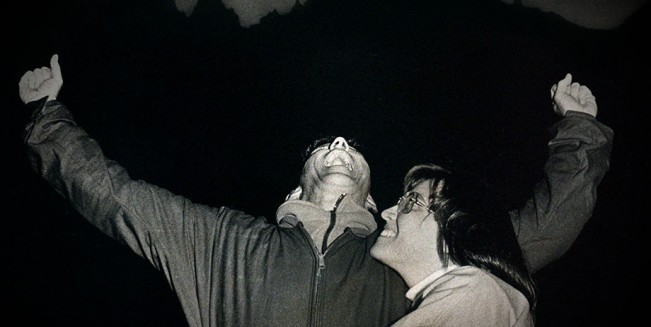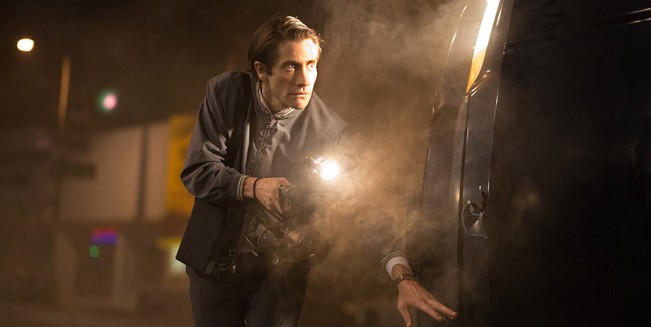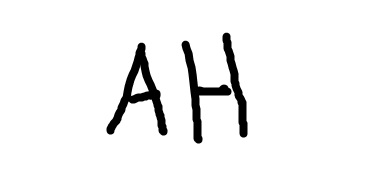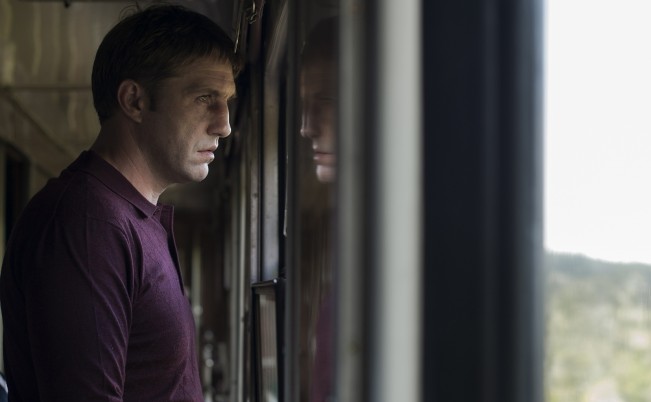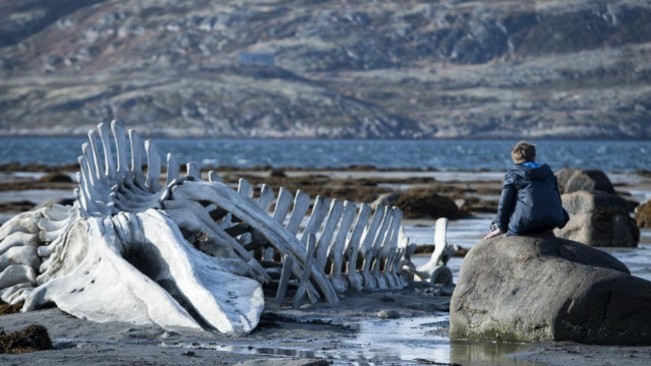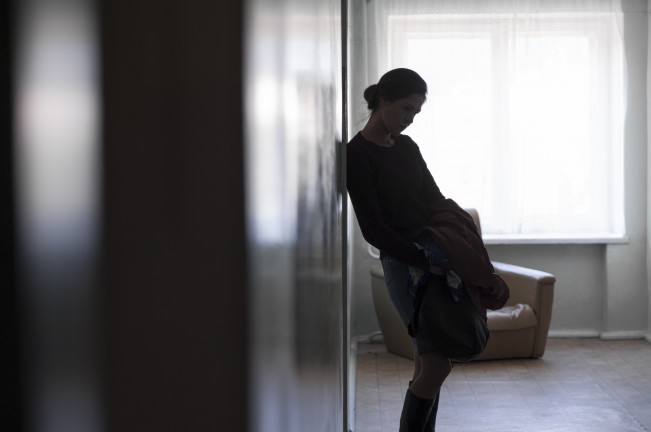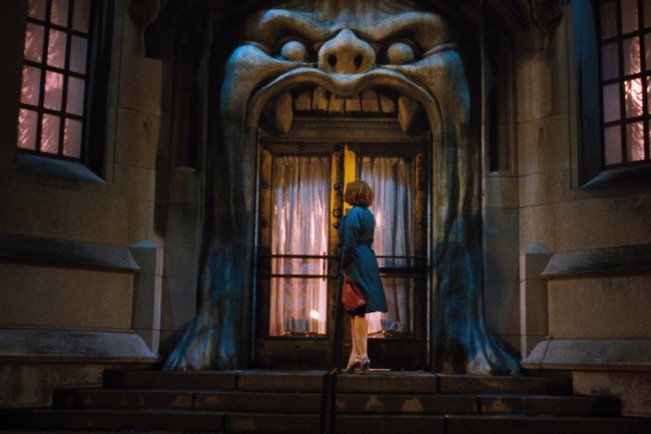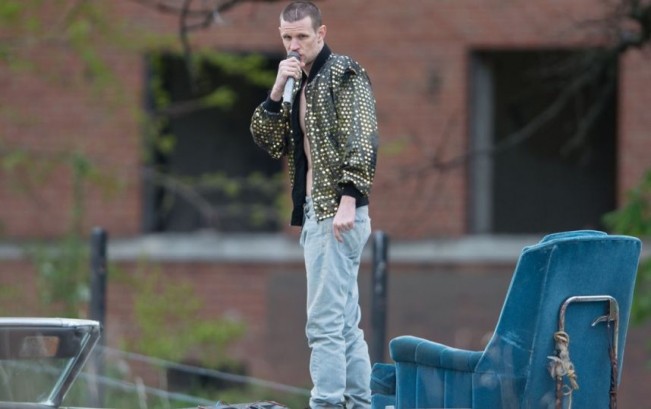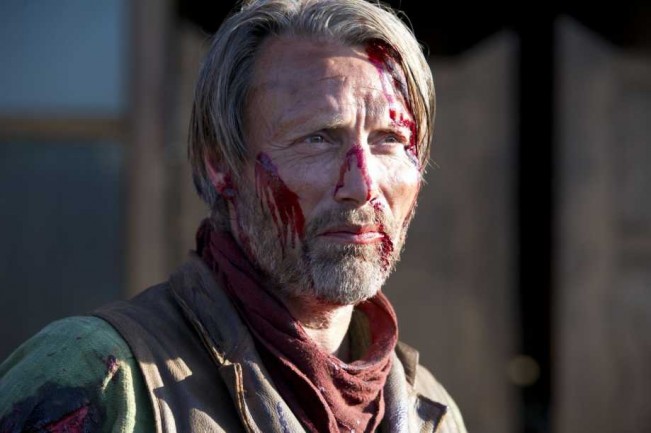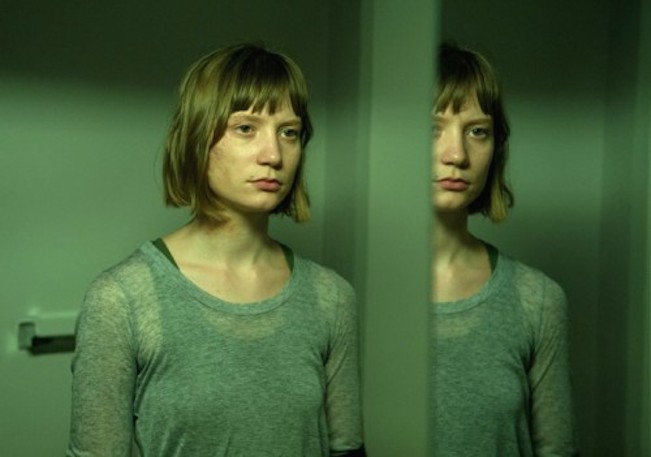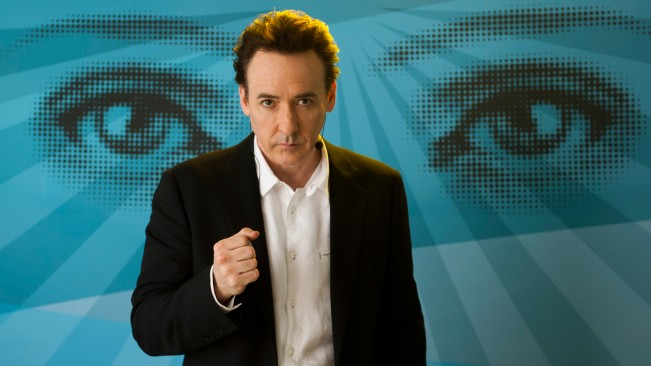In less than two months, festival circuiteers return to the sunny Festival de Cannes, an event that should see some serious heavy-hitters returning to the Croisette. And that’s just what the Palme d’Or Competition will likely be programmed primarily with this year: alumni.

You can expect the Palme slate to be about three-fourths Cannes veterans. That’s been the track record in recent years: in 2014, in a Competition with 18 films, Cannes added only five new names to its clubhouse: Xavier Dolan, Damián Szifrón, Bennett Miller, Alice Rohrwacher and Abderrahmane Sissako.
The math: Cannes 2014 was 73% veterans, the same percentage as 2012. 2013’s Palme slate was 75% Competition alumni.
This year won’t be any different.
So take your pick. I’ve reviewed the alumni of the past 12 (or so) Palme d’Or Competitions and sought out projects that will be ready in time for Cannes this year. I’ve also written some notes for some likely inclusions after The Likely Suspects, which should give a solid idea of what to expect in ten short weeks (or next month, when the Festival announces its 2015 line-up).
Cannes 2015 – The Likely Suspects
Audiard, Jacques – Dheepan (2015, post-prod)
Bellocchio, Marco – L’Ultimo Vampiro (2015, with Alba Rohrwacher)
Babenco, Hector – My Hindu Friend (2015, post-prod, with Willem Dafoe)
Del Toro, Guillermo – Crimson Peak (2015)
Desplechin, Arnaud – Trois souvenirs de ma jeunesse (2015, with Mathieu Amalric)
Egoyan, Atom – Remember (2015, post-prod, with Christopher Plummer)
Garcia, Nicole – starring in Belle Familles (Jean-Paul Rappeneau, 2015)
Garrel, Philippe – L’Ombre des Femmes (2015)
Garrone, Matteo – The Tale of Tales (2015, post-prod, with Salma Hayek, John C. Reilly, Vincent Cassel, Alba Rohrwacher)
Giannoli, Xavier – Marguerite (2015, post-prod)
Hillcoat, John – Triple Nine (2015, completed, September 11th release)
Hsiao-Hsien, Hou – Nie Yin Niang (The Assassin) (2015, post-prod)
Kawase, Naomi – Sweet Red Bean Paste (2015, post-prod)
Kaufman, Charlie – Anomalisa (2015, post-prod)
Khoo, Eric – In the Room (post-prod)
Kitano, Takeshi – Ryûzô to 7 nin no kobun tachi (2015)
Koreeda, Hirokazu – Kamakura Diary (2015, post-prod)
Kurosawa, Kiyoshi – Journey to the Shore (2015, post-prod)
Larrieu, Arnaud and Jean-Marie – Vingt et une nuits avec Pattie (2015, with Denis Lavant)
Luchetti, Daniele – Chiamatemi Francesco (2015, post-prod)
Maiwenn – Mon roi (2015, post-prod, with Vincent Cassel and Louis Garrel)
Malick, Terrence – Voyage of Time (2015, post-prod)
Miike, Takashi – Kaze ni tatsu raion (2015, post-prod)
Moretti, Nanni – Mia madre (2015, post-prod)
Nichols, Jeff – Midnight Special (2015, post-prod, Kirsten Dunst and Michael Shannon)
Noe, Gaspar – Love (2015, post-prod)
Salles, Walter – Jia Zhang-ke by Walter Salles (2015, documentary, post-prod)
Sang-soo, Im – My Friendly Villains (2015)
Sokourov, Alexander – Le Louvre Under German Occupation (2015, post-prod, Bruno Delbonnel cinematography)
Sorrentino, Paolo – The Early Years (2015, with Rachel Weisz, Michael Caine, Jane Fonda, Paul Dano, Harvey Keitel)
Tarantino, Quentin – The Hateful Eight (2015, filming, with Channing Tatum, Samuel L. Jackson, Kurt Russell, Tim Roth, Michael Madsen, and many more)
To, Johnnie – Design for Living (2015, post-prod)
Trapero, Pablo – The Clan (2015, produced by Pedro Almodovar)
Van Sant, Gus – The Sea of Trees (2015, post-prod)
Van Warmerdam, Alex – Schneider vs. Bax (2015, post-prod)
Vinterberg, Thomas – Far from the Madding Crowd (2015, post-prod, Juno Temple, Carey Mulligan, slated for May 1st release)
Weingartner, Hans – Soaring Underground (2015)
Weerasethakul, Apichatpong – Love in Khon Kaen (2015)

Some notes:
–Because my research only concerns alumni, there’s some fun to be had in guessing the four or five slots Cannes leaves open to induct newcomers into its Competition. It’s a crapshoot, but: perhaps one goes to Charlie Kaufman’s Anomalisa co-director Duke Johnson; other possible names include Denis Villeneuve (Sicario), Yorgos Lanthimos (The Lobster), George Miller (Mad Max: Fury Road), Martha Pinson (Tomorrow) or Louis Garrel (Les Deux Ami).
–Jean-Paul Rappeneau (2015’s Belles Familles) hasn’t played in Competition since 1990 (Cyrano de Bergerac), so he didn’t make my 2003-2014 alumni list—but he’s a sure bet for a Palme d’Or bow. Sean Penn’s latest directorial effort, The Last Face, also has a solid shot (he last played the Competition in 2001).
–Similarly, Todd Haynes’ Carol is an expected Competition film.
–Brad Bird’s Tomorrowland has “Special Screening” written all over it.
–With The Captive’s poor reception at Cannes 2014, I would be surprised if Egoyan decides to enter Remember this year.
–If George Miller’s Mad Max: Fury Road doesn’t play in Competition (Miller has been on the Jury twice), a slot like the Festival opener or an Out-of-Competition debut seems inevitable.
–In terms of Asian cinema, 2015 is a solid year for Cannes to choose its alumni from this year; that said, they will likely only select three or four. Most likely? From Japan: Kiyoshi Kurosawa’s Journey to the Shore and Naomi Kawase’s Sweet Red Bean Paste; from Taiwan, Hao Hsiao-hsien’s The Assassin; from Thailand, Palme d’Or winner Apichatpong Weerasethakul’s Love in Khon Kaen.
–Could Toby Tobias (Blood Orange) be Cannes-bound? Likely, but will his film make the Competition? With Iggy Pop in the cast, I’d expect an Un Certain Regard debut.
–Will Quentin Tarantino’s The Hateful Eight make it to the south of France this year? This superfan is naively optimistic. But there’s hope: given his love of Cannes and his unconventional press conference at last year’s Festival, Tarantino isn’t one to miss this event. And hey: if it’s not done, expect Harvey Weinstein to at least screen clips of QT’s latest dust-up in Cannes, albeit around the corner from the main event.
–Recent word from some French press is that the 2015 line-up will see a strong showing from Italy; certainly, the alumni are there for Cannes to pluck once again. Two-time Grand Prix-winner Matteo Garrone (The Tale of Tales), Oscar-winner Paolo Sorrentino (The Early Years) and former Jury President Nanni Moretti (Mia Madre) are can’t-lose bets.
–Certain documentaries listed above (like the Sokourov) are probable Out-of-Competition screenings to fill out the rest of the Festival.
–On a personal note: I’d love to see Alex Van Warmerdam return after his 2013 dark-horse hit Borgman. Fingers crossed!
Competition Veterans (2003-2014) with Listed or Upcoming Projects
Adamson, Andrew – producing Truckers (2015)
Almodovar, Pedro – producing Pablo Trapero’s The Clan (2015)
Assayas, Olivier – Summer Hours (script in development)
Audiard, Jacques – Dheepan (2015, post-prod)
Bellocchio, Marco – L’Ultimo Vampiro (2015, with Alba Rohrwacher)
Babenco, Hector – My Hindu Friend (2015, post-prod, with Willem Dafoe)
Campion, Jane – The Flamethrowers (in development)
Coen, Joel and Ethan – Jury Presidents – Hail, Caesar! (2015)
Coppola, Sofia – Fairyland (2015?)
Del Toro, Guillermo – Crimson Peak (2015)
Desplechin, Arnaud – Trois souvenirs de ma jeunesse (2015, with Mathieu Amalric)
Dolan, Xavier (NEW) – The Death and Life of John F. Donovan (2016)
Egoyan, Atom – Remember (2015, post-prod, with Christopher Plummer)
Garcia, Nicole – starring in Belle Familles (Jean-Paul Rappeneau, 2015)
Garrel, Philippe – L’Ombre des Femmes (2015)
Garrone, Matteo – The Tale of Tales (2015, post-prod, with Salma Hayek, John C. Reilly, Vincent Cassel, Alba Rohrwacher)
Giannoli, Xavier – Marguerite (2015, post-prod)
Gray, James – The Lost City of Z (2016, pre-prod)
Haneke, Michael – Flashmob (2015, details scant)
Hillcoat, John – Triple Nine (2015, completed, September 11th release)
Hopkins, Stephen – Race, 2016
Hsiao-Hsien, Hou – Nie Yin Niang (2015, post-prod)
Inarritu, Alejandro Gonzalez – The Revenant (2015, filming, Leonardo diCaprio)
Jarmusch, Jim – Untitled Stooges Documentary (2015, post-prod, with Iggy Pop)
Kawase, Naomi – Sweet Red Bean Paste (2015, post-prod)
Kaufman, Charlie – Anomalisa (2015, post-prod)
Kar-wai, Wong – producer and co-writer of The Ferryman (2015)
Khoo, Eric – In the Room (post-prod)
Kiarostami, Abbas – Horizontal Process (no date, script)
Kitano, Takeshi – Ryûzô to 7 nin no kobun tachi (2015)
Kechiche, Abdellatif – La blessure (2015)
Koreeda, Hirokazu – Kamakura Diary (2015, post-prod)
Kurosawa, Kiyoshi – Journey to the Shore (2015, post-prod)
Larrieu, Arnaud and Jean-Marie – Vingt et une nuits avec Pattie (2015, with Denis Lavant)
Liman, Doug – Reckoning with Torture (2015, post-prod)
Linklater, Richard – That’s What I’m Talking About (2015, post-prod)
Luchetti, Daniele – Chiamatemi Francesco (2015, post-prod)
Maiwenn – Mon roi (2015, post-prod, with Vincent Cassel and Louis Garrel)
Malick, Terrence – Voyage of Time (2015, post-prod)
Martel, Lucrecia – Zama (2015, script)
Miike, Takashi – Kaze ni tatsu raion (2015, post-prod)
Moretti, Nanni – Mia madre (2015, post-prod)
Nichols, Jeff – Midnight Special (2015, post-prod, Kirsten Dunst and Michael Shannon)
Noe, Gaspar – Love (2015, post-prod)
Salles, Walter – Jia Zhang-ke by Walter Salles (2015, documentary, post-prod)
Sang-soo, Im – My Friendly Villains (2015)
Satrapi, Marjane – Tales from the Hanging Head (no year)
Soderbergh, Steven – involved with Magic Mike XXL (2015)
Sokourov, Alexander – Le Louvre Under German Occupation (2015, post-prod, Bruno Delbonnel cinematography)
Sorrentino, Paolo – The Early Years (2015, with Rachel Weisz, Michael Caine, Jane Fonda, Paul Dano, Harvey Keitel)
Tarantino, Quentin – The Hateful Eight (2015, filming, with Channing Tatum, Samuel L. Jackson, Kurt Russell, Tim Roth, Michael Madsen, and many more)
Techine, Andre – Quand on a 17 ans (2016, pre-prod)
To, Johnnie – Design for Living (2015, post-prod)
Trapero, Pablo – The Clan (2015, produced by Pedro Almodovar)
Van Sant, Gus – The Sea of Trees (2015, post-prod)
Van Warmerdam, Alex – Schneider vs. Bax (2015, post-prod)
Vinterberg, Thomas – Far from the Madding Crowd (2015, post-prod, Juno Temple, Carey Mulligan, slated for May 1st release)
Weingartner, Hans – Soaring Underground (2015)
Weerasethakul, Apichatpong – Love in Khon Kaen (2015)
Alumni of the Palme d’Or Competition: 2003-2014
Adamson, Andrew – producing Truckers (2015)
Akin, Fatih – n/a
Almodovar, Pedro – producing Pablo Trapero’s The Clan (2015)
Amalric, Mathieu – n/a
Anderson, Wes – n/a
Arcand, Denys – n/a
Arnold, Andrea – n/a
Asbury, Kelly – n/a
Assayas, Olivier – Summer Hours (script in development)
Audiard, Jacques – Dheepan (2015, post-prod)
Avati, Pupi – n/a
Beauvois, Xavier – n/a
Bellocchio, Marco – L’Ultimo Vampiro (2015, with Alba Rohrwacher)
Belvaux, Lucas – n/a
Blier, Bertrand – n/a
Babenco, Hector – My Hindu Friend (2015, post-prod, with Willem Dafoe)
Bonello, Bertrand – n/a
Bouchareb, Rachid – n/a
Breillat, Catherine – n/a
Caetano, Israel Adrian 2 – n/a
Campion, Jane – The Flamethrowers (in development)
Cantet, Laurent – n/a
Carax, Leos – n/a
Cavalier, Alain – n/a
Chang-dong, Lee – n/a
Chan-wook, Park – multiple projects in script development
Cedar, Joseph – n/a
Ceylan, Nuri Bilge – n/a
Coen, Joel and Ethan – Jury Presidents – Hail, Caesar! (2015)
Coixet, Isabel – n/a
Coppola, Sofia – Fairyland (2015?)
Costa, Pedro – n/a
Cronenberg, David – n/a
Dardenne, Jean-Pierre and Luc – n/a
Daniels, Lee – n/a
Del Toro, Guillermo – Crimson Peak (2015)
Desplechin, Arnaud – Trois souvenirs de ma jeunesse (2015, with Mathieu Amalric)
Dominik, Andrew – n/a
Dolan, Xavier (NEW) – The Death and Life of John F. Donovan (2016)
Dumont, Bruno – n/a
Eastwood, Clint – n/a
Escalante, Amat – n/a
Egoyan, Atom – Remember (2015, post-prod, with Christopher Plummer)
Fincher, David – n/a
Folman, Ari – n/a
Gallo, Vincent – n/a
Garcia, Nicole – starring in Belle Familles (Jean-Paul Rappeneau, 2015)
Garrel, Philippe – L’Ombre des Femmes (2015)
Garrone, Matteo – The Tale of Tales (2015, post-prod, with Salma Hayek, John C. Reilly, Vincent Cassel, Alba Rohrwacher)
Gatlif, Tony – n/a
Giannoli, Xavier – Marguerite (2015, post-prod)
Gitai, Amos – n/a
Giordana, Marco Tullio – n/a
Godard, Jean-Luc (NEW) – n/a
Gray, James – The Lost City of Z (2016, pre-prod)
Greenaway, Peter – n/a
Haneke, Michael – Flashmob (2015, details scant)
Haroun, Mahamat-Saleh – n/a
Hazanavicius, Michel – n/a
Hillcoat, John – Triple Nine (2015, completed, September 11th release)
Honore, Christophe – n/a
Hopkins, Stephen – Race, 2016
Hsiao-Hsien, Hou – Nie Yin Niang (2015, post-prod)
Inarritu, Alejandro Gonzalez – The Revenant (2015, filming, Leonardo diCaprio)
Jarmusch, Jim – Untitled Stooges Documentary (2015, post-prod, with Iggy Pop)
Jaoui, Agnes – n/a
Jones, Tommy Lee – n/a
Kawase, Naomi – Sweet Red Bean Paste (2015, post-prod)
Kaufman, Charlie – Anomalisa (2015, post-prod)
Kaurismaki, Aki – n/a
Kar-wai, Wong – producer and co-writer of The Ferryman (2015)
Khoo, Eric – In the Room (post-prod)
Kiarostami, Abbas – Horizontal Process (no date, script)
Ki-Duk, Kim – n/a
Kitano, Takeshi – Ryûzô to 7 nin no kobun tachi (2015)
Kechiche, Abdellatif – La blessure (2015)
Kelly, Richard – n/a
Koreeda, Hirokazu – Kamakura Diary (2015, post-prod)
Kurosawa, Kiyoshi – Journey to the Shore (2015, post-prod)
Kusturica, Emir – n/a
Larrieu, Arnaud and Jean-Marie – Vingt et une nuits avec Pattie (2015, with Denis Lavant)
Lee, Ang – n/a
Leigh, Julia – n/a
Leigh, Mike – n/a
Liman, Doug – Reckoning with Torture (2015, post-prod)
Linklater, Richard – That’s What I’m Talking About (2015, post-prod)
Loach, Ken – n/a
Loznitsa, Sergei – n/a
Luchetti, Daniele – Chiamatemi Francesco (2015, post-prod)
Maiwenn – Mon roi (2015, post-prod, with Vincent Cassel and Louis Garrel)
Makhmalbaf, Samira – n/a
Malick, Terrence – Voyage of Time (2015, post-prod)
Masahiro, Kobayashi – n/a
Mamoru, Oshii – n/a
Martel, Lucrecia – Zama (2015, script)
Meirelles, Fernando – n/a
Mendoza, Brillante – n/a
Mihaileanu, Radu – n/a
Miike, Takashi – Kaze ni tatsu raion (2015, post-prod)
Mikhalkov, Nikita – n/a
Ming-Liang, Tsai – n/a
Miller, Bennett (NEW)
Miller, Claude – RIP, 1942-2012
Miller, Frank – n/a
Moll, Dominik – n/a
Moore, Michael – n/a
Moretti, Nanni – Mia madre (2015, post-prod)
Mundruczo, Kornel – n/a
Mungiu, Cristian – n/a
Nadjari, Raphael – n/a
Nasrallah, Yousry – n/a
Nichols, Jeff – Midnight Special (2015, post-prod, Kirsten Dunst and Michael Shannon)
Noe, Gaspar – Love (2015, post-prod)
Nossiter, Jonathan – n/a
Ozon, Francois – n/a
Paronnaud, Vincent – n/a
Polanski, Roman – n/a
Ramsay, Lynne – n/a
Resnais, Alain – RIP, 1922-2014
Reygadas, Carlos – n/a
Rodriguez, Robert – n/a
Rohrwacher, Alice (NEW) – n/a
Ruiz, Raul – RIP, 1941-2011
Saleem, Hiner – n/a
Salles, Walter – Jia Zhang-ke by Walter Salles (2015, documentary, post-prod)
Sang-soo, Hong – n/a
Sang-soo, Im – My Friendly Villains (2015)
Satrapi, Marjane – Tales from the Hanging Head (no year)
Seidl, Ulrich – n/a
Schleinzer, Markus – n/a
Schnabel, Julian – n/a
Sissako, Abderrahmane (NEW) – n/a
Soderbergh, Steven – involved with Magic Mike XXL (2015)
Sokourov, Alexander – Le Louvre Under German Occupation (2015, post-prod, Bruno Delbonnel cinematography)
Sorrentino, Paolo – The Early Years (2015, with Rachel Weisz, Michael Caine, Jane Fonda, Paul Dano, Harvey Keitel)
Suleiman, Elia – n/a
Szifron, Damian (NEW) – n/a
Tarantino, Quentin – The Hateful Eight (2015, filming, with Channing Tatum, Samuel L. Jackson, Kurt Russell, Tim Roth, Michael Madsen, and many more)
Tarr, Bela – n/a
Tavernier, Bertrand – n/a
Techine, Andre – Quand on a 17 ans (2016, pre-prod)
Tedeschi, Valeria Bruni – n/a
Thomas, Daniela – n/a
To, Johnnie – Design for Living (2015, post-prod)
Trapero, Pablo – The Clan (2015, produced by Pedro Almodovar)
Van Sant, Gus – The Sea of Trees (2015, post-prod)
Van Warmerdam, Alex – Schneider vs. Bax (2015, post-prod)
Vernon, Conrad – n/a
Vinterberg, Thomas – Far from the Madding Crowd (2015, post-prod, Juno Temple, Carey Mulligan, slated for May 1st release)
von Trier, Lars – n/a
Weingartner, Hans – Soaring Underground (2015)
Weerasethakul, Apichatpong – Love in Khon Kaen (2015)
Wenders, Wim – n/a
Winding Refn, Nicolas – n/a
Xiaoshuai, Wang – n/a
Ye, Lou – n/a
Zhangke, Jia – n/a
Zviaguintsev, Andrei – n/a
